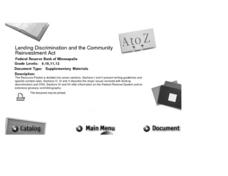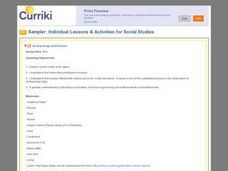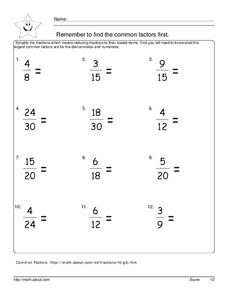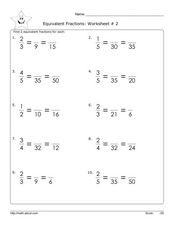Curated OER
Matching Games, Trees and Animals
Students identify and define new words as they are introduced to specific trees, leaves, animals and animal habitats, engage in literacy-related play by playing games that focus on animals and trees mentioned in book, A Tree for Me, and...
Curated OER
Scavenger Hunt
Students and their families participate in nature walk to locate, observe, and identify scavenger hunt items as well as other items of interest, compare and discuss finds with each other, and identify items found that do not belong in...
Curated OER
My Money
Students identify and interpret the relationships between various components of currency, discusses the uses of money, and provides advanced lessons on making change. They also identify the various ways that money is used and how to use...
Curated OER
Economic Activity and Markets
Learners identify and interpret that economic activity involves making choices in the face of scarcity, therefore making choices involves a cost. They also identify that individuals interact in markets by inducing one another, through...
Curated OER
Lending Discrimination and the Community Reinvestment Act
Write about economic and banking issues of concern to the public. Investigate lending discrimination and the impact of the 1977 Community Reinvestment Act. Use a guide to do research and write an essay.
Curated OER
Fraction One-Half
In this recognizing the fraction 1/2 worksheet, learners observe blank bars and fill them in showing different ways to make one-half. Students answer eight questions.
Curated OER
Simulating a Middle East Peace Summit
Tenth graders explore the issues in the Middle East. In this World History lesson, 10th graders research the problems between Palestine and Israel. Students write a speech on their point of view of the peace process.
Curated OER
You are the Curator: Building a Museum of the 1920s and 1930s
Students examine primary and secondary sources regarding 1920's and 1930's America. In this Webquest lesson, students explore sources regarding the American decades in order to create their own museum exhibits.
Curated OER
Archaeology and Erosion
Sixth graders study how erosion affects archaeology sites. In this investigative lesson, 6th graders construct a model of a pyramid using sugar cubes. They will investigate in groups how water, wind, and sunlight affects their model...
Curated OER
Simplify Fractions
In this reducing fractions worksheet, students find the common factors to reduce fractions to their lowest terms. Students solve 12 problems.
Curated OER
Simplify the Fractions
In this reducing fractions to their lowest terms worksheet, students find the common factors, identify the largest common factors, and simplify the fractions.. Students solve 12 problems.
Curated OER
Equivalent Fractions: # 2
In this finding equal values of fractions worksheet, young scholars read fractions plus a pair of fractions with only the denominators and fill in the numerators making each problem equivalent. Students solve 20 problems.
Curated OER
Division facts: no remainders
In this division worksheet, students divide two digit numbers by one digit numbers without remainders. Students complete 12 division problems.
Curated OER
Two-Digit Addition
In this finding the sums worksheet, students use a number line to add two-digit numbers without regrouping. Students solve 20 problems.
Curated OER
Site and Situation: Right Place at the Right Time
Learners analyze geographic details. In this research skills lesson, students research maps as well as primary and secondary sources to analyze growth, population, and manufacturing in Altoona, Pennsylvania following World...
Curated OER
Ancient Egypt Alphabet Book
Students research Ancient Egypt using a specific letter of the alphabet as a guide. In this Ancient Egypt lesson plan, students independently research their assigned topic using ProQuest or other research software. Once students have...
Facing History and Ourselves
American Responses to the Armenian Genocide
Young scholars examine World War I war crimes. In this world history instructional activity, students use primary and secondary sources to research and understand the action taken by the United States during the Armenian Genocide. Young...
Facing History and Ourselves
The Range of Choices
Learners examine crimes against human rights. In this world history instructional activity, students watch a segment of a video about the Armenian Genocide. Learners reflect on the crimes of the Ottoman government in classroom...
Facing History and Ourselves
Identity and Belonging
High schoolers examine World War I war crimes. For this world history activity, students examine a painting by Ashile Gorky, a refugee from the Armenian genocide. High schoolers interpret the piece of art and discuss its historical...
Facing History and Ourselves
What is Justice After Genocide?
High schoolers explore the meaning and implications of genocide. In this human rights lesson, students investigate the Aremenian genocide that took place in Turkey and the subsequent trials of the leader of the...
Facing History and Ourselves
Analyzing Historical Evidence
High schoolers examine World War I war crimes. In this world history instructional activity, high schoolers use primary and secondary sources to research and understand the systematic nature of the Armenian Genocide. High schoolers...
Facing History and Ourselves
We and They, the Armenians in the Ottoman Empire
Learners examine World War I war crimes. For this world history instructional activity, students use primary and secondary sources to research and understand the action taken by the United States during the Armenian Genocide. Learners...
Facing History and Ourselves
Emmett Till: Choosing to Remember
Mamie Till, the mother of Emmett Till and civil rights activist, believed that her son's murder was the last straw before public outrage over racial injustice spilled over into the Civil Rights Movement of the 20th century. A history...
Facing History and Ourselves
Eyes on the Prize Lesson 1: The Philosophy of Nonviolence
Students explore the concept of nonviolent demonstration. In this Civil Rights Movement activity, students investigate examples of injustice and discuss the philosophy of nonviolence fueled by leaders of the movement. Students apply...
Other popular searches
- The Library of Congress
- Map of a Library
- End of Year Library Activities
- Purpose of Classroom Library
- Photo of School Library























